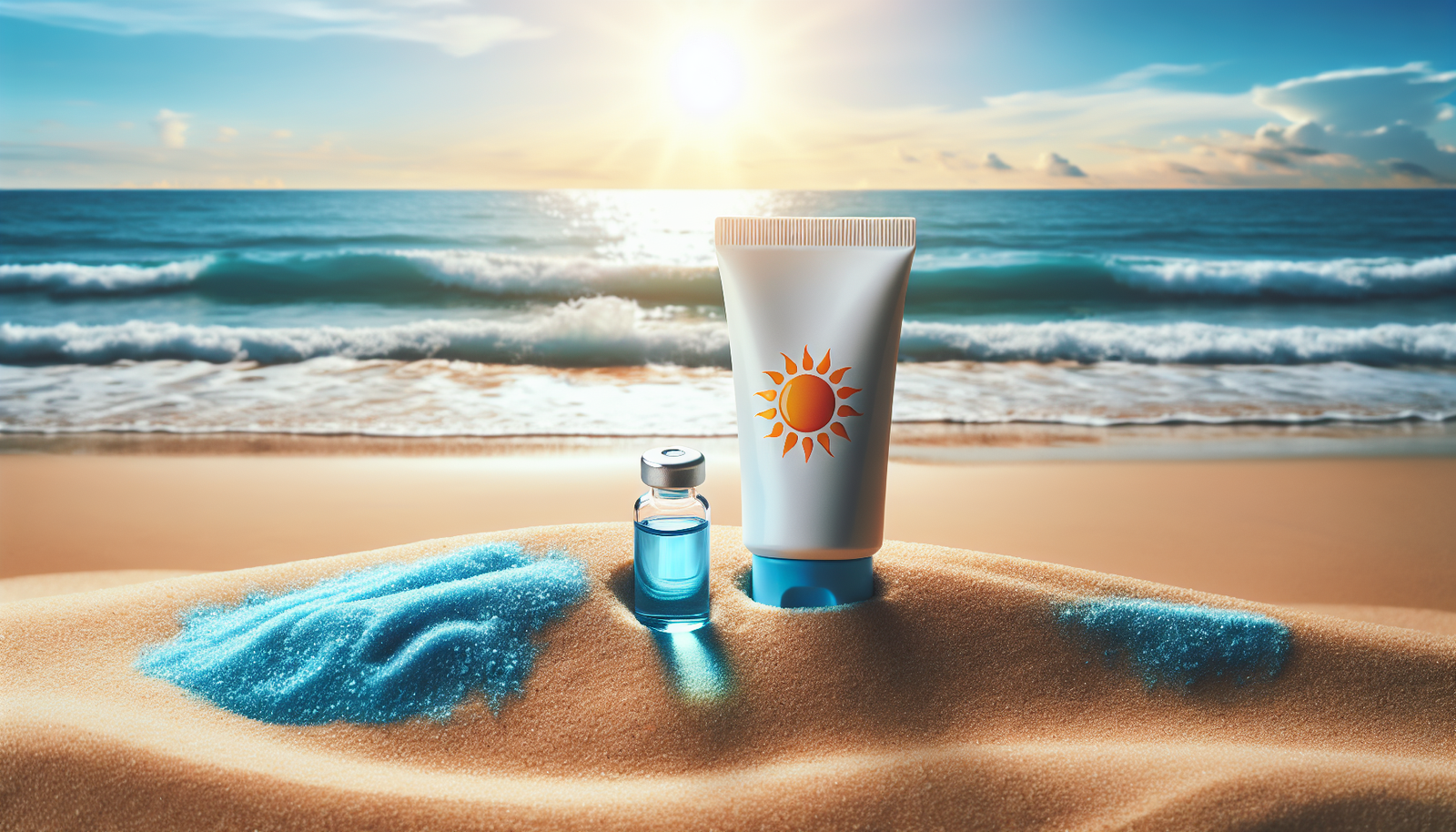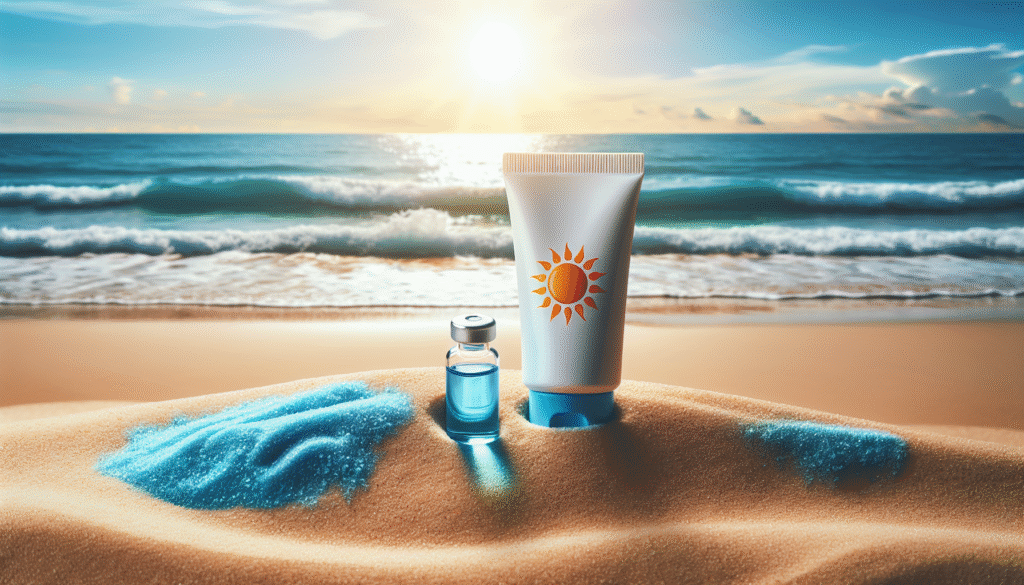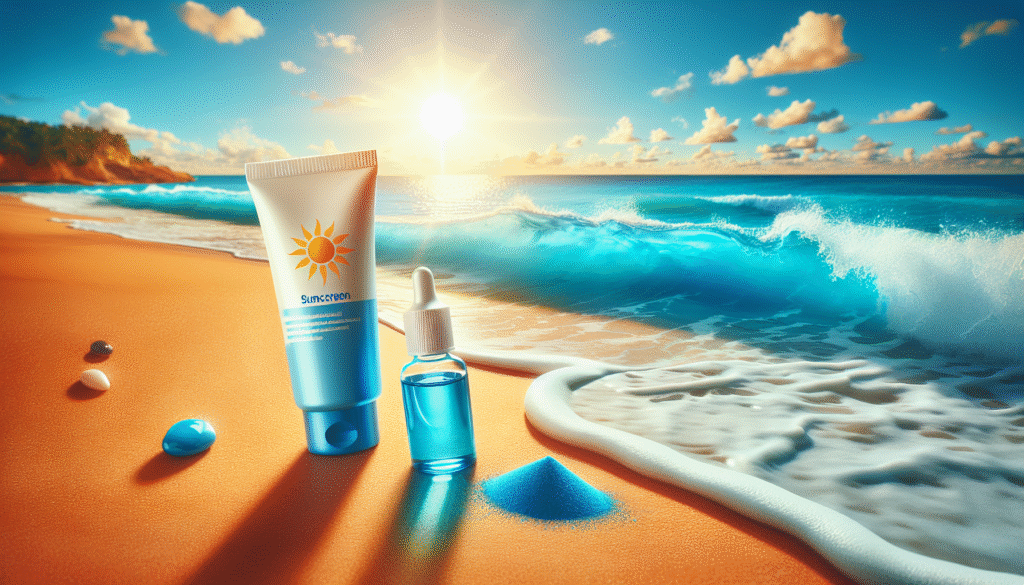
What if a simple combination could enhance your skincare routine and provide additional protection against damage?

Understanding Methylene Blue
Methylene blue is a synthetic dye that has been utilized in various fields, including medicine and biology. Due to its unique properties, it has garnered attention in skincare for its potential antioxidant and anti-aging benefits.
The Science Behind Methylene Blue
Methylene blue works through a series of mechanisms within the body. It is known to enhance cellular respiration and reduce oxidative stress. The pigment has properties that allow it to penetrate the skin efficiently, making it a potential ally in combating photoaging—an inevitable consequence of prolonged sun exposure.
Benefits of Methylene Blue in Skincare
-
Antioxidant Properties: Methylene blue is renowned for its ability to neutralize free radicals, which are unstable molecules that can lead to premature aging and other skin issues.
-
Cellular Repair: By promoting healthy cellular function, this compound may support the skin in repairing itself from damage caused by environmental stressors.
-
Anti-inflammatory Effects: Methylene blue can help reduce inflammation in the skin, making it beneficial for individuals with sensitive or reactive skin types.
Combining these benefits with a well-formulated sunscreen can potentially create a skincare routine that not only protects against UV damage but also enhances the overall health of the skin.
The Role of Sunscreen
Sunscreen is a cornerstone of an effective skincare regimen, particularly when it comes to preventing sun damage. Regular use of sunscreen protects the skin from the harmful effects of ultraviolet (UV) rays, such as sunburn, skin cancer, and accelerated aging.
Understanding UV Radiation
There are two main types of UV radiation that reach the Earth’s surface: UVA and UVB.
- UVA Rays: These rays penetrate deeply into the skin and are primarily responsible for photoaging and skin cancer.
- UVB Rays: These rays primarily affect the outer layer of the skin and are responsible for causing sunburn.
Choosing the Right Sunscreen
When selecting a sunscreen, consider the following factors:
-
Broad-Spectrum Protection: Choose a product that offers protection against both UVA and UVB rays.
-
SPF Rating: An SPF of at least 30 is recommended for daily use, though higher SPF products may provide additional protection for extended outdoor activities.
-
Skin Type: Different formulations exist for various skin types—select a sunscreen that complements your unique needs, whether you have oily, dry, or combination skin.
The Synergy Between Methylene Blue and Sunscreen
Combining methylene blue and sunscreen can potentially create a powerful protective barrier against environmental stressors, including UV rays.
Mechanism of Action
Methylene blue enhances the protective capacity of sunscreen by boosting its antioxidant profile. Here’s how this synergy may work:
-
Enhanced Free Radical Scavenging: While sunscreen deflects UV rays, methylene blue may neutralize free radicals generated by UV exposure.
-
Improved Skin Repair Mechanisms: The cellular benefits of methylene blue can support faster recovery from damage while the sunscreen provides initial protection.
-
Added Hydration: Some formulations of methylene blue can help maintain skin hydration, combating the drying effects of sunscreen.
Integrating both into your skincare routine can lead to a more resilient skin barrier and a reduction in visible signs of aging.
How to Incorporate Methylene Blue into Your Skincare Routine
If you’re considering incorporating methylene blue into your regimen, it’s important to do so thoughtfully and effectively.
Product Selection
When looking for methylene blue products, opt for formulations that are designed for topical application rather than industrial-grade products. Look for serums or creams that include methylene blue as a primary ingredient.
Application Method
-
Cleanse: Start with a clean face to ensure maximum absorption of the products.
-
Apply Methylene Blue: Use a small amount of the methylene blue product and gently pat it onto your skin.
-
Sunscreen Application: After the methylene blue has absorbed (allow a few minutes for this), apply a broad-spectrum sunscreen on top. It is essential to apply enough product to achieve the labeled SPF protection.
Timing
Considering the timing of your application can influence efficacy. Using methylene blue in the morning before your sunscreen can provide your skin with antioxidants and protection from oxidative stress throughout the day.

Best Practices for Daily Use
Establishing a routine that incorporates both methylene blue and sunscreen requires consistency and attention to detail.
Daily Routine Considerations
-
Frequency: Apply sunscreen every two hours if you’re outside for an extended period. If you’re in an indoor setting, reapplication every four hours can suffice.
-
Layering Products: When layering skincare products, it is essential to allow each layer to absorb properly. Use a gentle patting motion rather than rubbing to ensure even distribution.
-
Test Compatibility: Prior to fully integrating methylene blue into your routine, conduct a patch test to ensure compatibility with your skin. Some individuals may experience sensitivity or irritation.
Monitoring Your Skin
Regularly assess your skin for changes in texture, hydration levels, or any adverse reactions. If irritation occurs, consult with a skincare professional who can provide personalized advice.
Potential Risks and Considerations
While methylene blue has shown promise in skincare, it is essential to be aware of potential risks and contraindications.
Skin Sensitivity
Some individuals may experience irritation or allergic responses when using methylene blue. Monitor your skin’s response and discontinue use if you notice any adverse effects.
Staining Concerns
Methylene blue is a dye, and while reputable skincare products should minimize staining, it’s vital to be cautious during application to avoid discoloration of clothing or surfaces.
Interactions with Other Ingredients
When combining products, consider potential interactions with other active ingredients in your skincare routine, such as retinoids or acids. These combinations may heighten sensitivity or alter effectiveness.
Additional Considerations When Combining Ingredients
Combining methylene blue with sunscreen is not solely about the mechanics of application; it’s about creating a holistic approach to skincare.
Complementary Ingredients
To enhance the effectiveness of your routine, consider including complementary ingredients alongside methylene blue and sunscreen:
-
Vitamin C: Known for its brightening properties and additional antioxidative capabilities, vitamin C can complement the effects of methylene blue.
-
Niacinamide: This ingredient helps improve skin texture and can enhance your skin’s overall barrier function while keeping inflammation at bay.
-
Hyaluronic Acid: Incorporating hyaluronic acid can promote hydration and plumpness, enhancing the overall moisture retention of the skin.
Lifestyle Factors
Integrating lifestyle changes can also bolster the effectiveness of your skincare routine.
-
Hydration: Ensure you are drinking adequate water throughout the day to maintain skin hydration from within.
-
Diet: A balanced diet rich in antioxidants can further support skin health and resilience.
-
Sun Protection Habits: Wearing protective clothing and seeking shade during peak sun hours can enhance the protective measures of your sunscreen.
Anticipating Results
With a consistent regimen, many individuals may begin to notice improvements over time.
Recognizing Changes
Look for these indicators:
-
Reduced Appearance of Fine Lines: Enhanced cellular repair may lead to the diminishment of small wrinkles.
-
Improved Skin Texture: The combination may promote a smoother feel and appearance over time.
-
Increased Radiance: The antioxidant properties of methylene blue working alongside sunscreen may brighten the complexion.
Patience and Consistency
Creating a visibly healthier skin profile takes time. Commit to your routine and give your skin the opportunity to respond positively.
Conclusion
By thoughtfully combining methylene blue with sunscreen, you empower your skin to combat environmental stressors more effectively. This dual approach not only fosters better protection against UV damage but also enhances your skin’s ability to repair and rejuvenate itself. As you embark on this journey, remain attentive to your skin’s unique needs and invest in consistency to achieve the best results. You possess the tools and knowledge to create a powerful skincare routine that supports both your immediate concerns and long-term skin health.